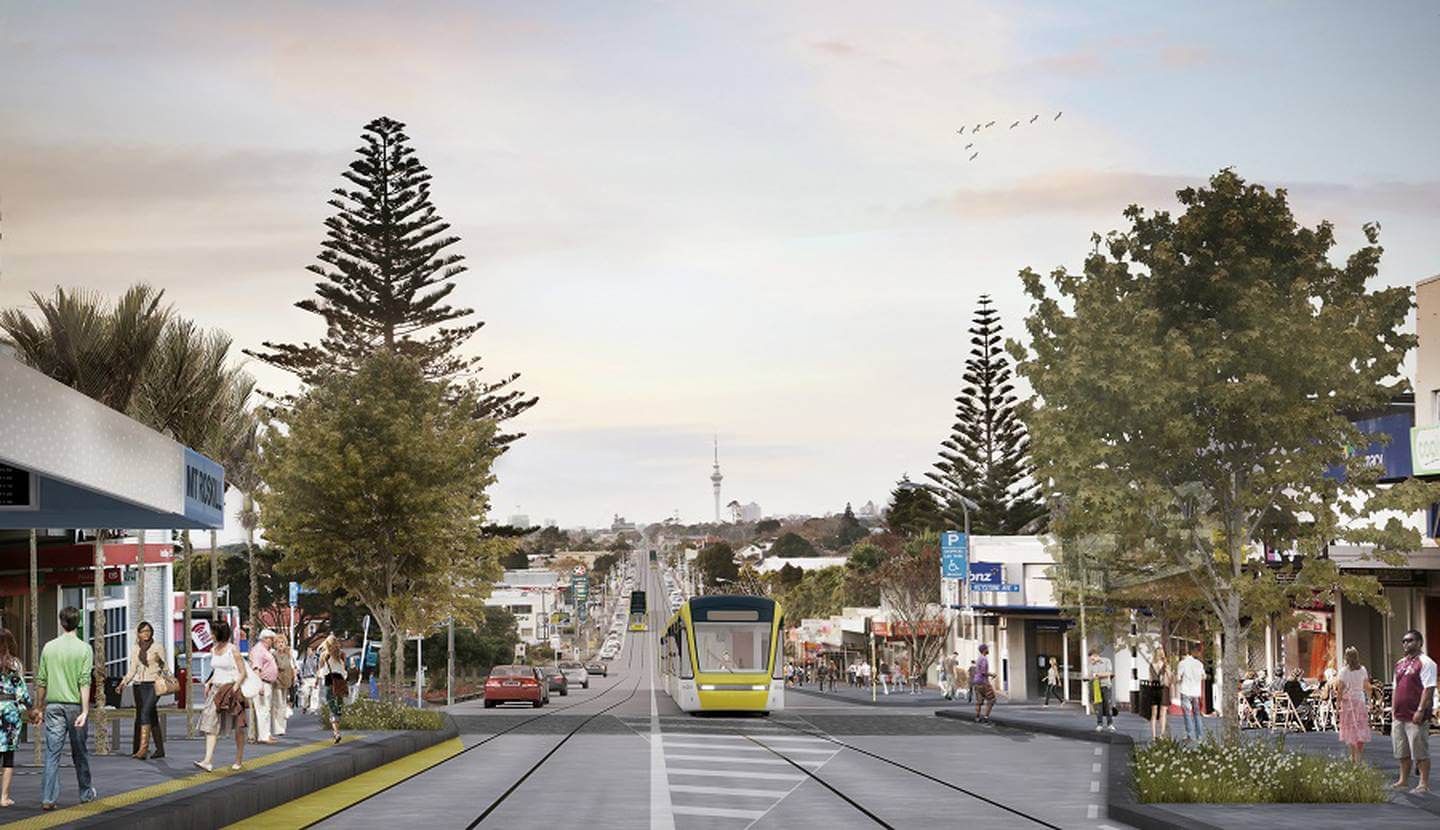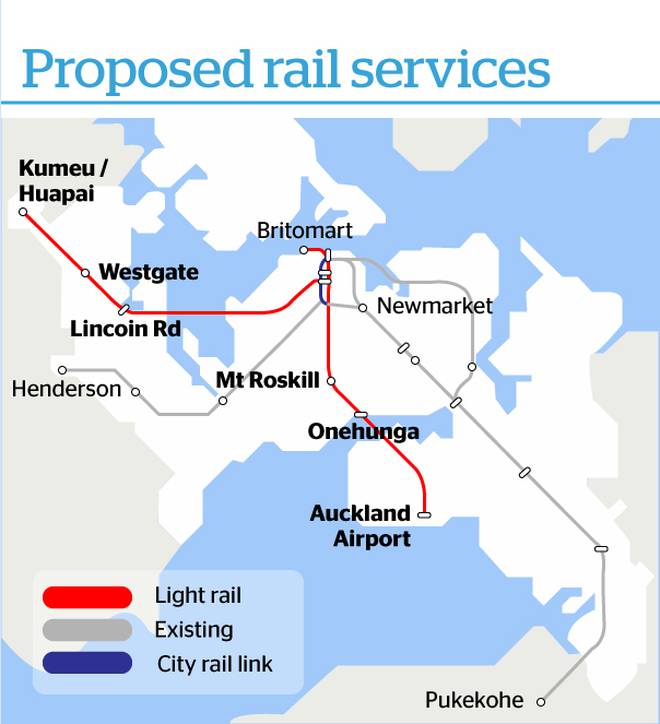Full speed ahead for two Auckland light rail lines
Source: NZ Herald

The Government will build two light rail lines in Auckland – and the Super Fund wants to own them.
Work is about to start in Auckland on two light rail lines, not one – and the New Zealand Superannuation Fund wants to build, own and operate both of them.
Transport Minister Phil Twyford and Finance Minister Grant Robertson made the surprise announcement today. The ministers said Cabinet has agreed that work should start on both lines straight away, with an open tender process for the funding, construction and operation of the lines.
One light rail line will run from the central city to Māngere and the airport.
The City to Māngere light rail line will run from Wynyard Quarter, up Queen St, across to Dominion Rd and down to Mt Roskill, then to Onehunga and across the Manukau harbour to Māngere, on through the industrial airport zone to a terminal at the airport.
It will be a commuter line connecting the 55,000 households already located on the route with the city’s two-fastest growing employment centres – the city centre and the airport precinct. Tens of thousands more homes will be built along the route in the coming decades.
The line will also provide a frequent and reliable public transport link for airline passengers.
The second light rail line will be a northwest line, running from the central city in parallel with the Northwest Motorway to Westgate and eventually to Kumeu.
The northwestern line is also a commuter route, linking the central city to existing suburbs like Te Atatu and the fast-growing new suburbs of the outer northwest, including West Harbour and Hobsonville. In time the route will be extended to Kumeu and perhaps Waimauku.
This line is expected to follow the route of the Northwest Motorway, in a similar way to the Northern Busway on the Northern Motorway.
Both light rail lines should be in use well within the next 10 years.
The Government had previously indicated that the city-to-Māngere line would get an early start but the timetable for the northwestern line was not clear.
The Government and Auckland Council listed both projects in their transport funding plan announced last month. The plan allocated $1.8 billion as “seed money” to these projects but their combined cost was estimated at around $6 billion. The balance seems unlikely to come from either Government or council.
The tender process will be led by the NZ Transport Agency with support from Treasury and the Ministry of Transport. That effectively means the council’s transport arm, Auckland Transport, will not have a significant role in developing the lines.
The revelation that the Super Fund is interested in the project is a big surprise. The ministers said the fund’s approach to the Government was unsolicited.
The Super Fund proposes to put together a consortium of overseas pension funds, to take on all aspects of the project. It would raise the money and then take charge of construction and operation. The lines would be owned by the Super Fund.
The NZ Super Fund is a sovereign wealth fund owned by the Crown. Its purpose is to accumulate funds that will be used to help pay for National Superannuation. The fund has had a very strong investment record in recent years, with average annual returns (after costs and before tax) of 15 per cent. At March this year the fund’s value stood at $37.91 billion.
The NZ Super Fund is an active investor in the New Zealand market, although not in the infrastructure sector. It has $5.3 billion invested here, a third of which is in Kaingaroa Timberlands and other timber investments, and another third in listed New Zealand equities, including Metlifecare and Z Energy. Only 1.81 per cent of the local portfolio, or less than $100 million, is invested in infrastructure.
Because the Super Fund is publicly owned, the arrangement would not be a public-private partnership. But it is expected to operate in a similar way, with the government retaining at least some of the risk.
Asked if the Super Fund would expect a guaranteed income from the lines, Twyford said it was “all to be negotiated” – but he expected there would be some kind of agreement on “an annual revenue stream”.
“Any investor will require a commercial return and that will be determined during the procurement process,” he said.
The Government has not agreed to accept the Super Fund’s proposal. Twyford said it would be invited to make its bid as part of the tendering process.
The two light rail lines are key components of the Government’s plan to build a rapid transit network in Auckland.
This will also involve new rapid bus routes, especially in the southeast, as well as an extended Northern Busway, the existing electric rail lines and the new City Rail Link that will double the capacity of those rail lines.
A new harbour crossing is envisaged, although not within the next 10 years.
